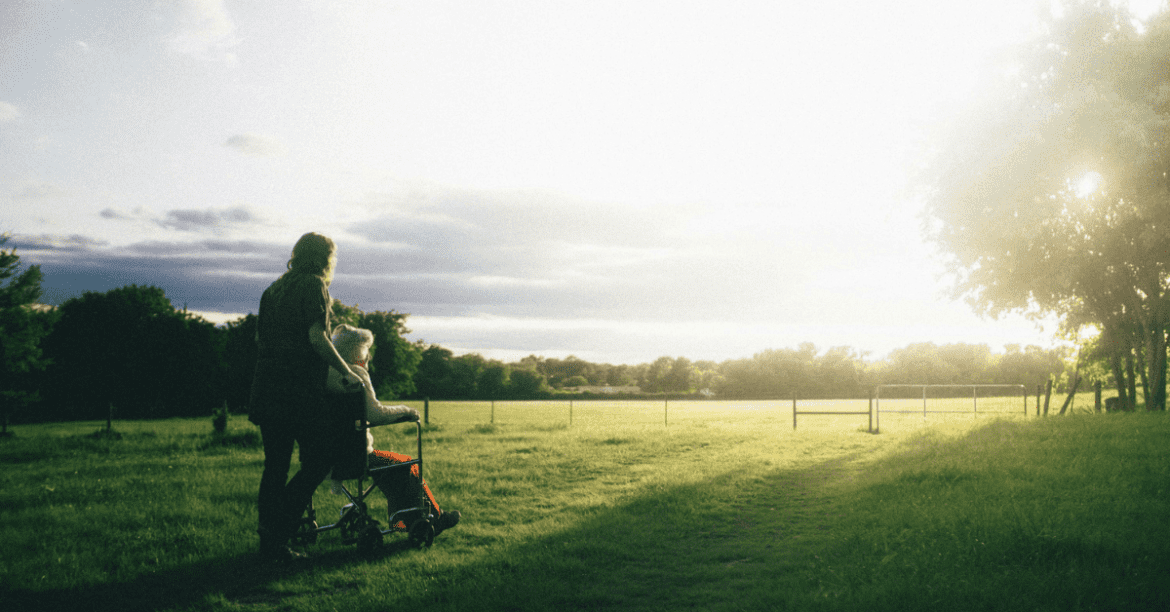In history lies humankind’s knowledge of pitfalls and greatness. A teacher like no other next to experience, history can guide us into the future by looking into the past. When we look through the looking glass into our past, it is not just to reminisce about the yesteryears but to understand the pathway that has led to the present.
So BoomersHub wishes to map out a brief overview of the history of senior living and how it has transformed from the early period to what we are experiencing today!
How it all began?
If you consider the modern-day blueprint of assisted living or nursing homes, it may be said that the first homes for aged people began in Philadelphia. Known as the Friends Almshouse back then, it was the foremost institution founded that was explicitly built to care for older or aged adults.
But senior living history before the Almshouse dates back before 1713. So instead, it is not how we know today’s communities, but rather these forms of care existed in another format, without the ‘senior living’ title, but in more unconventional methods. And not just in the US, these retirement homes or centers were practically simple homes or people asked to be caregivers to seniors who had to see their children go off to work or, more accurately, war. A scenario that was common even before the 1st World War.
Today, senior care homes have evolved from nursing homes to even luxurious retirement communities for seniors.
History of senior living throughout the ages
Let us look at an overview of the historical periods that laid the foundation for today’s modern amenities and communities!
Senior living in the 1700s
The 1700s were tough for older adults. It was a challenging time for those without an immediate family member who would care for them. Almshouses and poorhouses were a common community trend back then, particularly because most country infirmaries became a home for seniors or the elderly who would be dependent on younger adults.
However, a positive phase of the late 1700s was that the government began crafting and implementing federal pension programs. It was one of the first acts of the then-government back in the 1780s that allowed authorized pensions for Revolutionary War veterans, particularly those who were disabled. This has gradually led to what we know as senior housing for veterans and Veteran Aid.
Senior living in the 1800s
The 1800s is what actually began introducing extensive support for the elderly. Numerous non-profit old age or care homes were constructed to offer better accommodation, full board meals, and assistive care. The 19th century saw a massive shift and evolution in senior care. Though these homes got a significant change in structure and layout, including services provided, it laid out the main foundation of the standard that senior living communities must follow to be operational.
Senior living in the 1900s
It was after the 1900s that we started seeing the foundation laid in gradual steps with the time that has led to the modern-day senior living community lifestyle.
Between 1900 and 1940
This was one of the most crucial times in senior living history. Many nursing homes and health care services, including dire, chronic care facilities, began to increase intensely. This was before the Great Depression when an estimated 4% of older adults aged 65 and older lived in an institutional situation. Any form of financial management for the future was aided by state-subsidized pension plans and retirement programs from private sector companies.
However, during the 1930s and onwards, the US economy experienced a distressing decade of financial and economic trouble in light of the Great Depression. Millions of Americans were unemployed, and a significant section of the older population lived as dependents. In 1935, the Social Security Act was contracted by the government into law, which led to the Old Age Assistance (OAA) and relevant welfare schemes.
Between 1940 and 1950
After 1940, the rise of veterans or senior veterans began to rise. This group, including their spouses, experienced World War II. After, there was an immediate requirement for enlarged and improved long-term care. Considering the size of the aging and disabled populace was increasing, many people became eligible to apply for Veteran and old-age assistance benefits.
The 1950 mark signaled the beginning of three decades of disastrous nursing home fires throughout the US. This boom led to many hazardous facilities and toxic fire threats. Because of this, government legislation began to focus on structuring building codes, maintaining safety, and improving residential care (which today is known as assisted living). Unfortunately, this situation brought into question and light the improvements direly needed for long-term care, especially for seniors.
During the 1960s
In 1960, 9.2% of the US population was over 65. In light of the rise in nursing home residents and care, this period also saw an increase in government spending on nursing home or care facility construction and development. Even though the quality concern of such communities continued to intensify, around 44% of nursing homes fell below standard and were hazardous to fire threats.
But in 1965, this sector saw a remarkable upturn and positive response in terms of growth. More and more government-backed policies protecting seniors began to emerge, and grants were being approved for senior living communities. On July 30, 1965, Medicare and Medicaid were established into law by the government, which made it possible for seniors to start applying for such programs and get into senior living. Something that is crucial to the sector even today.
After the 1990s
The history of senior living facilities in such communities can be traced back to the 90s. This is when senior homes began to become more modern, particularly assisted living and independent living communities. Furthermore, as more research began, memory care was developed to a different degree to care for patients with dementia and Alzheimer’s or any other seniors with different types of cognitive issues.
The 1990s served as a standard model for providing ulterior care that is progressive well into today. The quality of care ensured in senior living became a top priority, and it was able to be confirmed as more and more Wall Street brought in financial investors. This created a boom and the ability to develop better senior living facilities as it became an investable business. From this point on, proper health-related facilities like medication management and on-call medical visits to the doctor/hospital became more structured.
In addition, during these times, senior living communities started providing recreational and engaging activities for older adults to make senior care a more active and fulfilling lifestyle.
Future of senior living
The future of senior living is brimming with prospects. Today’s adults, the seniors who admit themselves into retirement facilities, will find modern features and services to make their transition into a new lifestyle smoother and better.
Even now, the prospects of senior living are filled with hope. Technological advancement in medical equipment and monitoring is already helping staffs and caregivers do their job more efficiently, while more tech gadgets are making a living better and more enjoyable for seniors.
If you are interested in a glance at what the future senior living of our generation can look like, read here!
Fun fact
It was actually after 2011 and continuing on to today that the first baby boomers in the US turned 65 and over, and it was when the ‘Retirement Wave” started to transpire.
Final thoughts
With such a long history of senior living in the US, dating back to the earliest periods of the 1700s, the evolution of such retirement communities that have edged over into modern times is truly a wonder.
It can be established, however, that through the ages, the times and tides have crafted senior living from a simple concept of almshouses to a unique lifestyle for older adults after retirement.
FAQs
Who invented 55+ communities?
The first 55+ senior community was established in Youngtown, Arizona, which opened in 1954. The establishment’s founder, more commonly known as Big Ben Schleifer, started the community with his friends Elmer Johns and Francis Greer. They urbanized 320 acres of farmland to create a thriving -structured elder adult community exclusive to only 55+ retirees.
How long have assisted living facilities been around?
From the early 1980s until 1985, individuals in the US in specific regions created and operated assisted living communities. The first modern assisted living facility, however, actually opened in 1981, where they structured the services, including proper staff with 24/7 assistance. So assisted living facilities have generally been around for at least 35+ years.
When did nursing homes begin in America?
Nursing homes have a long history in the USA. The modern types of nursing homes we see and the structure that is built today came into complete formation during the early 90s. But the concept of nursing homes began under another name, ‘almshouses’ during the 1700s.

